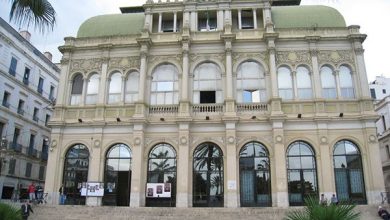
Minister of Culture and Arts, Malika Bendouda, supervised, today Sunday, in the National Public Museum “Bardo” in Algiers, the opening of an art exhibition on Tuareg Queen Tin Hinan.
This exhibition gives a historical overview of the history of the discoveries, archaeological excavations carried out by a French-American mission in Abalessa area of Tamanrasset in 1925, where the remains of the skeleton of Tin Hinan were found, along with her jewelry and funeral utensils.
It also presents “more than 180 pieces” of traditional silver jewelry dating back to the period between the end of the nineteenth century and the beginning of the twentieth century, gifted by a French collector to the museum.
The exhibition also includes illustrations of Abalessa landmark, its engineering and the surrounding environment, in addition to many paintings highlighting the richness and diversity of the ancient heritage.
Also included are traditional leather dress from the end of the nineteenth century, gold, silver and bronze jewelry from the fourth and fifth centuries, in addition to a sword, dagger, whip and camel headband from the twentieth century.
It also sheds light on Algerian and international literary and historical works that dealt with the history of the region and its myths, especially those related to the myth of the Utopian city of Atlantis, which some have linked to Al-Ahagar.
The director of the board, Zoheir Harichan, said that the reason for not displaying the remains of Tin Hinan’s skeleton “in the museum” is due to the “lack of preservation conditions,” especially “the absence of modern display techniques suitable for this very important archaeological landmark.”
The head of the Museum’s Communication and Animation Department, Tidjedam Khalifa, had stated in September 2020 that the Bardo will be exhibiting it before the end of that year.
The last exhibition of this collection dates back to 2006, when restoration work began in the museum.
The skeleton of Tin Hinan dates back to the fourth century, but the burial site was not discovered until 1925, and next to it was found a rare collection of valuable artifacts and jewelry, which were transported to the United States of America for 5 years, to return to Algeria to be displayed at the Bardo until 2006.
According to the stories, songs and legends of the region, Tin Hinan, whose name means “that of the tents” or “that which comes from far “, would have come from the region of Tafilalt (south-eastern Morocco today) and was elected Tamenokalt of the Ahaggar (the equivalent of chief of several tribes).





